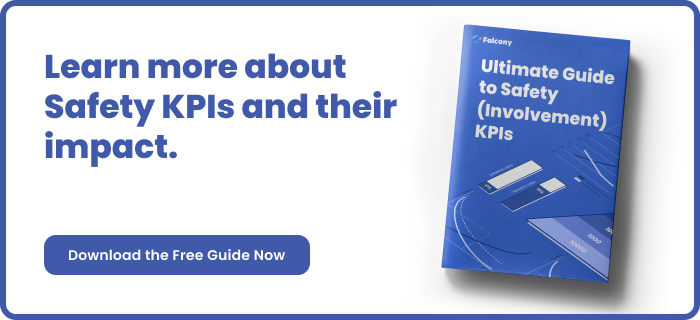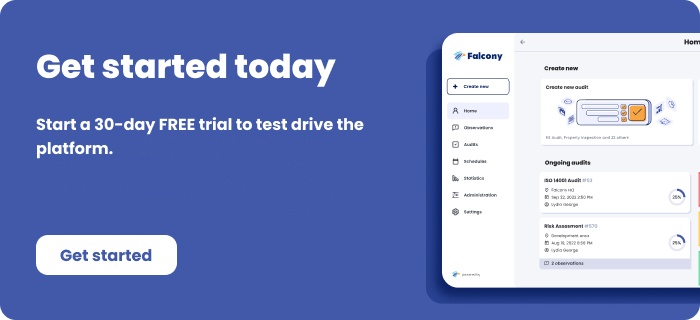8 Common Safety Risks in Government and Public Sector
Government and public sector organisations shoulder a critical responsibility to ensure the safety of employees, service users, and the general public.
Whether operating in offices, schools, transport infrastructure, healthcare facilities, or public spaces, these entities face unique challenges in identifying and managing safety risks. A failure to address these risks not only jeopardises lives but also undermines public trust and regulatory compliance.
In this blog, we explore eight common safety risks that are prevalent across the public sector and examine how organisations can effectively mitigate them.
Slips, Trips and Falls
These are among the most frequently reported incidents across all sectors, and public buildings are no exception. Poor lighting, uneven flooring, wet surfaces, and cluttered walkways can lead to injuries for both staff and the public. Regular inspections, clear signage, and effective maintenance programmes are key preventive measures.
Manual Handling Injuries
Many roles within the public sector – such as waste collection, healthcare, and facilities management – involve lifting or moving loads. Improper techniques or lack of training can result in musculoskeletal injuries. Implementing manual handling training and providing suitable equipment can reduce this risk significantly.
Violence and Aggression
Frontline staff, particularly in healthcare, social services, and local council roles, may encounter aggressive behaviour from members of the public. Without proper protocols and training, these situations can escalate. Staff should be equipped with conflict resolution skills and supported by clear reporting and follow-up procedures.
Exposure to Hazardous Substances
Public sector workers may come into contact with chemicals, biological agents, or contaminated waste – especially in cleaning, healthcare, and maintenance roles. COSHH (Control of Substances Hazardous to Health) regulations require risk assessments, proper labelling, PPE, and training to ensure safe handling.
Fire Safety Risks
Government buildings often have high footfall and complex layouts, which can complicate evacuation during a fire. Inadequate fire detection systems, poor maintenance of electrical equipment, and blocked fire exits are common issues. Routine fire drills, fire risk assessments, and up-to-date evacuation plans are essential.
Ergonomic and Display Screen Equipment (DSE) Issues
Office-based employees in the public sector are at risk of repetitive strain injuries, eye strain, and back problems due to prolonged DSE use. Assessing workstation setups, encouraging regular breaks, and providing ergonomic furniture can help address these risks.
Vehicle-Related Incidents
Transport and fleet services, including emergency responders and maintenance crews, are exposed to road safety hazards. Risks include driver fatigue, poor vehicle maintenance, and inadequate route planning. Driver training, scheduled vehicle checks, and use of telematics can mitigate such dangers.
Lone Working
Employees who work in isolated environments – such as environmental officers, housing inspectors, or out-of-hours social workers – face increased vulnerability. Without immediate access to assistance, these workers require robust lone working policies, GPS tracking, and communication tools to stay safe.
Conclusion
Safety in the government and public sector extends beyond compliance – it is about protecting people, maintaining public confidence, and ensuring uninterrupted delivery of essential services. A proactive approach that includes regular risk assessments, incident reporting, staff training, and the use of digital safety management systems can make a significant difference.
As public expectations rise and regulatory frameworks evolve, prioritising safety must remain at the forefront of organisational strategy.
If you're looking for a platform to manage any and all types of risks, we've got you covered. Falcony | Risks is easy-to-use, boosts two-way communication, has customisable workflows, automated analytics, vast integration possibilities and more. Start your 30-day trial or Contact us for more information:
We are building the world's first operational involvement platform. Our mission is to make the process of finding, sharing, fixing and learning from issues and observations as easy as thinking about them and as rewarding as being remembered for them.
By doing this, we are making work more meaningful for all parties involved.
More information at falcony.io.

Related posts
9 Common Safety Risks in Waste Management and Recycling
Waste management and recycling are critical to maintaining a sustainable environment, but the...
9 Most Typical Safety Incidents in Automotive and Vehicle Manufacturing
Safety incidents in automotive and vehicle manufacturing can disrupt operations, cause...
7 Typical Unsafe Conditions in Waste Management and Recycling
Waste management and recycling facilities are vital to supporting a sustainable future, yet they...







